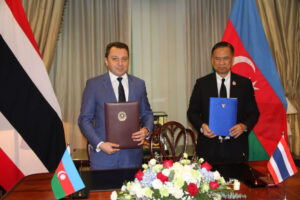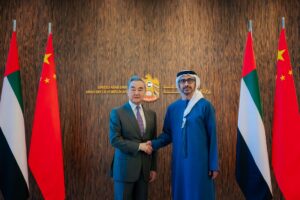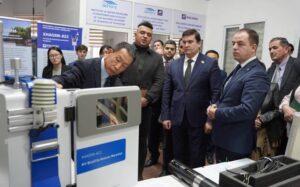China and Thailand Forge Partnership in Space Exploration

Beijing, The Gulf Observer: China and Thailand have embarked on a collaborative journey into the cosmos with the signing of two memorandums of understanding (MoUs) on Friday. The agreements, inked between the China National Space Administration (CNSA) and the Ministry of Higher Education, Science, Research and Innovation of Thailand, herald a new era of cooperation in space exploration and the peaceful utilization of outer space.
One of the key highlights of the partnership is Thailand’s involvement in China’s ambitious lunar exploration missions. The upcoming Chang’e-7 mission, slated for launch around 2026, will carry a pioneering global space weather monitoring device developed by Thailand. This device, designed to observe cosmic radiation and space weather from the lunar perspective, signifies Thailand’s debut in deep space exploration.
Furthermore, China’s Chang’e-8 mission, scheduled for launch in 2028, presents a significant opportunity for collaboration. With a payload capacity of 200 kg designated for international cooperation, Thailand has submitted multiple applications for lunar surface operation robots and scientific payloads, currently undergoing selection.
Director Guan Feng of the Lunar Exploration and Space Engineering Center of CNSA outlined China’s commitment to the fourth phase of its lunar exploration program. This phase, encompassing the Chang’e-4, Chang’e-6, Chang’e-7, and Chang’e-8 missions, aims to lay the groundwork for the International Lunar Research Station.
The collaboration between China and Thailand extends beyond lunar exploration. The MoUs pave the way for joint space projects, scientific exchange programs, personnel training initiatives, and the exchange of data and information. Both nations are set to engage in comprehensive research, planning, and implementation of the International Lunar Research Station, inviting participation from other countries, international organizations, research institutes, universities, and industrial entities.
Guan emphasized China’s openness to global cooperation, with more than 10 countries and international organizations already on board. He extended a warm invitation to additional nations and entities to contribute to the discussion, construction, and utilization of scientific research facilities on the lunar surface for the betterment of humanity.
As China and Thailand embark on this collaborative odyssey, the world eagerly anticipates the advancements and discoveries that will emerge from their shared endeavors in the vast expanse of outer space.


